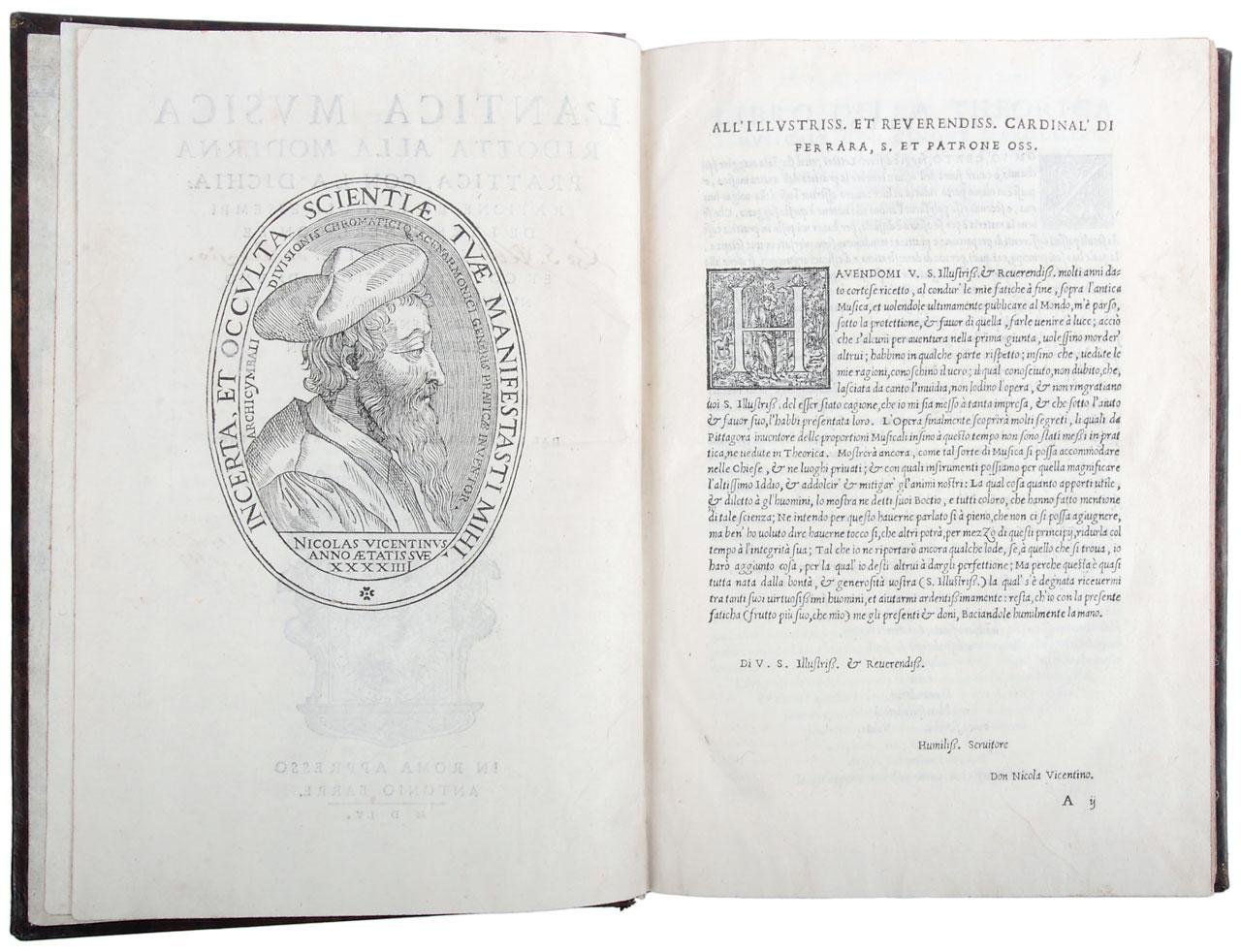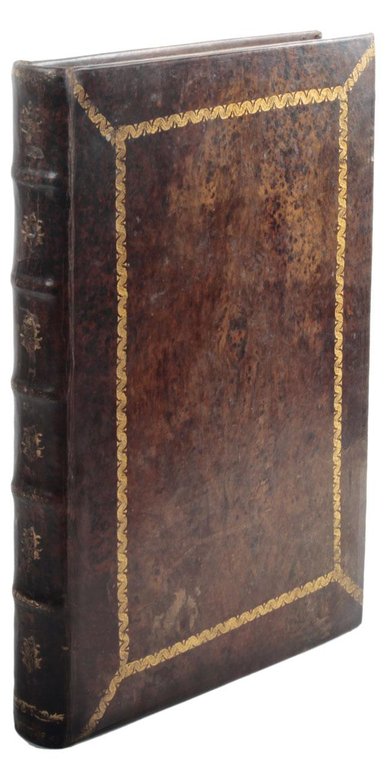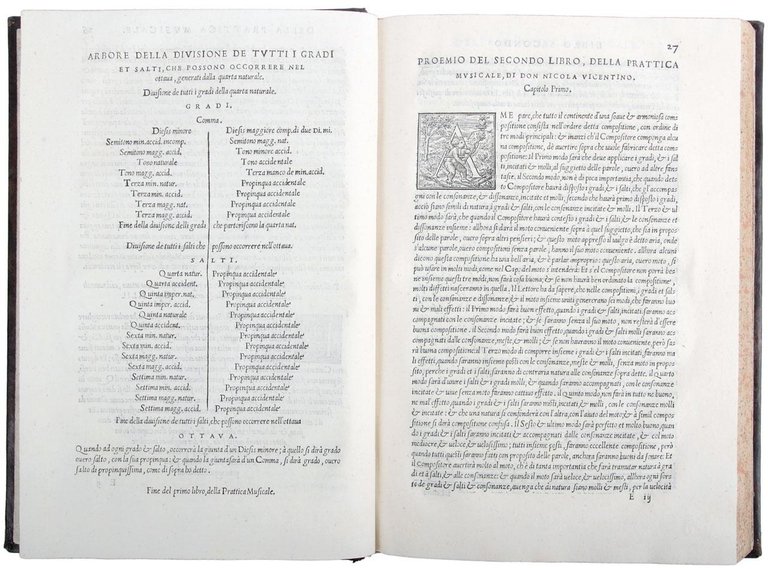




Rare and modern books
VICENTINO, Nicola (1511-1572)
L'Antica Musica ridotta alla Moderna Prattica, con la dichiaratione, et con gli essempi de i tre generi, con le loro spetie. Et con l'inven- tione di uno nuovo stromento, nel quale si contiene tutta la perfetta musica, con molti segreti musicali. Nuovamente mess'in luce
Antonio Barre, 1555
18000.00 €
Govi Libreria Antiquaria
(Modena, Italy)
The correct shipping costs are calculated once the shipping address is entered during order creation. One or more delivery methods are available at the Seller's own discretion: Standard, Express, Economy, In-store pick-up.
Bookshop shipping conditions:
For items priced over €300, it is possible to request an instalment plan from Maremagnum. Payment can be made with Carta del Docente, Carta della cultura giovani e del merito, Public Administration.
Delivery time is estimated according to the shipping time of the bookshop and the courier. In case of customs detention, delivery delays may occur. Any customs duties are charged to the recipient.
For more infoPayment methods
- PayPal
- Credit card
- Bank transfer
-
-
Find out how to use
your Carta del Docente -
Find out how to use
your Carta della cultura giovani e del merito
Details
Description
VERY RARE FIRST EDITION, first issue (the work was re-issued with just the date changed on the title page in 1557) of one of the most influential music theory books of the sixteenth century, dedicated to Cardinal Ippolito II d'Este. The Renaissance musicologist Edward Lowinsky (1967) acknowledges Vicentino as “the greatest revolutionary of the sixteenth century [...] The epochal significance of his treatise lies in the fact that here is the first esthetics of music in which every element of sound: melody, harmony, rhythm, texture, choice of instruments, manner of performance is critically examined as to its expressive potential, and in which the relativity of each element in varying contexts is demonstrated” (E.E. Lowinsky, The musical avant-garde of the Renaissance or: The peril and profit of foresight, in: “Art, science and history in the Renais- sance”, C. S. Singleton, ed., Baltimore, MD , 1967, p. 133).
Unlike most early theorists, Vicentino, who was a pupil of the Flemish-Venetian composer Adrian Willaert, did not simply summarize the practice of his time, but also attempted to adapt the Greek musical modes to the purpose of modern harmonic singing and instrumental performance. His major contribution is the adaptation of the ancient Greek chromatic and enharmonic genera to modern polyphonic practice. Anticipating Vincenzo Galilei and Claudio Monteverdi, Vicentino also expressed avant-garde's views on the relation between music and text. He stated that, in order to better express the feelings of a verbal text, mu- sic should be sometimes allowed to break the strict rules of counterpoint.
“For centuries, tuning systems were central to music theoretical discussions as they laid out the raw materials for composition. However, surviving compositions that explicitly require a specific tuning system are rare. Nicola Vicentino's treatise Ancient Music Adapted to Modern Practice provides an original theory of intervals and tuning, as well as compositions that strive to embody his theory. Vicentino's musical philosophy involves the listener's emotions and reason and argues that perception is an important consideration in the development of theories and in writing music. Vicentino's compositions offer a unique opportunity to investigate perception in the context of a novel tuning system and elucidate what kinds of musical choices and contexts best highlight the nuances of his system. The present paper reports the results of two perceptual studies that investigated the ability of musically trained listeners to discriminate between short musical excerpts for voices presented in Vicentino's 31-tone tuning system and in the standard 12-tone equal temperament. Modern tuning software has made it pos- sible to have natural voices singing, but to precisely control the tuning of each note, all the while leaving the natural variation of jitter and vibrato if needed. Musical and acoustical correlates were also examined to determine whether musical context had an effect on discrimination performance” (S. McAdams et al., Perception of Vicentino's 31-tone tuning system, in: “Journal of Interdisciplinary Music Stud- ies”, 8/1&2, 2014-2016, p. 158).
“This treatise is a major contribution to the growing movement that sought to free both theory and practice from a dependence on the traditional ecclesiastical modes. Of particular interest is his description of the 'arcicembalo', a unique harpsichord that

